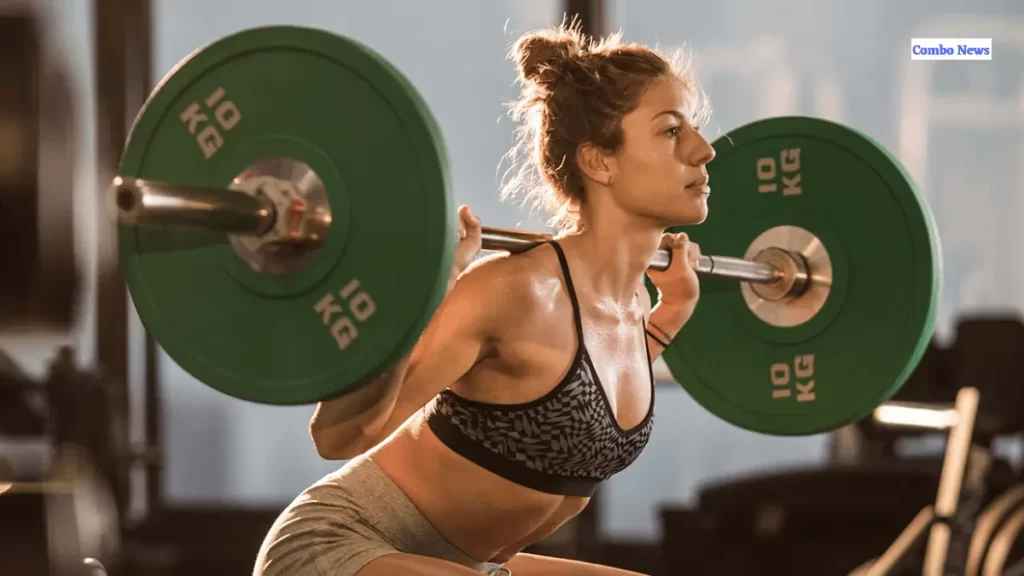The Downsides of Machine Workouts in the Gym: Balancing Convenience and Effectiveness

In the ever-evolving landscape of fitness and exercise, the gym remains a cornerstone for those seeking to sculpt their bodies and improve their overall health. One of the most debated aspects of gym training is the use of machine workouts. While these devices offer convenience and simplicity, they also come with their fair share of disadvantages that every fitness enthusiast should consider.
In this article, we delve into the drawbacks of machine workouts, shedding light on the potential pitfalls of relying solely on these mechanical aids for your fitness journey.
In the fast-paced world of fitness, machine workouts have become a staple for many gym-goers. They offer convenience, simplicity, and a guided approach to strength training. However, beneath the shiny surface of these machines lies a set of downsides that fitness enthusiasts should be aware of.
Let’s delve into the dark side of machine workouts and explore why a balanced approach to gym routines is crucial for long-term fitness success.

15 Drawbacks of Machine Workouts
1. Limited Range of Motion:
Machine workouts often restrict your natural range of motion. Unlike free weights that allow a full and unrestricted movement, machines force your body into predetermined patterns. This limitation can lead to muscle imbalances and reduced flexibility over time.
2. Neglecting Stabilizer Muscles:
Machines provide stability, but they also neglect the development of stabilizer muscles. These smaller muscles play a crucial role in maintaining balance and preventing injuries. Relying solely on machines can result in an underdeveloped support system for your primary muscle groups.
3. Risk of Imbalances:
Continuous use of machines can lead to muscle imbalances. As some muscles are targeted more than others, imbalances may occur, increasing the risk of injuries and compromising overall functional fitness.
Also Read | Exploring the Remarkable 15 Benefits of Yoga for Skin Health: Unlock
4. Less Caloric Burn:
Compared to compound movements with free weights, machine workouts generally burn fewer calories. The stabilizing effort required in free weight exercises engages more muscle groups, leading to a higher caloric expenditure during and after the workout.
5. Boredom and Plateau:
Using machines exclusively can lead to workout monotony. The lack of variety may cause boredom, and your body may adapt to the routine, reaching a plateau where gains become stagnant. Mixing up your workouts with free weights and functional exercises can keep things interesting and challenge your body.
6. Inefficient for Functional Fitness:
Machines isolate specific muscle groups, but they often fail to replicate real-life movements. Functional fitness involves activities that mimic daily tasks, and relying solely on machines may not adequately prepare your body for these dynamic challenges.
7. Dependency on Equipment:
While machines are convenient, they can create a dependency on equipment. This reliance becomes a drawback when you find yourself in a gym without the specific machines you’re accustomed to, hindering your ability to adapt and work out effectively.
8. Cost and Space Constraints:
Gyms with a variety of machines can be expensive, and having a similar setup at home may not be practical due to space and budget constraints. Free weights offer a cost-effective and space-efficient alternative for a comprehensive workout.
9. Less Core Activation:
Core muscles are essential for stability and overall strength. Many machine exercises, however, fail to engage the core effectively. This lack of activation can hinder the development of a strong and functional core.
Also Read | What is Fibromyalgia? An Emerging Lifestyle Disorder in Corporate Employees
10. Artificial Support:

Machines provide artificial support by guiding the movement. While this may seem beneficial for beginners, it can lead to a false sense of strength. Free weight exercises, on the other hand, require your muscles to work against gravity, building functional strength.
11. Risk of Overuse Injuries:
Repetitive use of machines can increase the risk of overuse injuries. Certain joints and muscles may bear the brunt of the workload, leading to strains and discomfort over time.
12. Not Suitable for All Fitness Levels:
Machines may not be suitable for individuals with specific health conditions or injuries. They lack the adaptability that free weights offer, making it challenging to tailor workouts to varying fitness levels and requirements.
13. Less Cognitive Engagement:
Unlike free weight exercises that require focus and coordination, machine workouts can be less mentally engaging. The lack of cognitive stimulation may lead to a less satisfying overall workout experience.
14. Less Variety in Functional Movements:
Functional movements involve multiple joints and muscles working together. Machines often isolate specific muscles, limiting the variety of functional movements in your routine. Diversifying your exercises with free weights can enhance your overall functional fitness.
15. Overemphasis on Aesthetics:
While machines can contribute to muscle hypertrophy and a sculpted physique, they may overemphasize aesthetics at the expense of overall fitness. Prioritizing functional strength and mobility is essential for a well-rounded and sustainable fitness journey.
Also Read | The Ultimate Fitness Routine for Teenagers – Building a Healthy Lifestyle
Key Facts:

1. Stabilizer Muscle Development: Free weights engage stabilizer muscles, promoting a more balanced and injury-resistant physique.
2. Caloric Expenditure: Compound movements with free weights result in higher caloric burn compared to machine workouts.
3. Functional Fitness: Machines may not adequately prepare the body for real-life movements and activities.
4. Cost-Effective Alternative: Free weights offer a cost-effective and space-efficient solution for a comprehensive workout.
5. Core Activation: Many machine exercises lack effective engagement of core muscles, hindering overall strength and stability.
6. Adaptability: Free weights allow for a more adaptable workout routine, suitable for individuals with varying fitness levels and requirements.
In conclusion, while machine workouts offer undeniable convenience, they come with a set of drawbacks that can impact your long-term fitness goals. A balanced approach, incorporating free weights, functional exercises, and variety in movements, is key to mitigating these downsides and ensuring a holistic and effective fitness routine.
Also Read | Meditation Benefits for Heart Health: A Comprehensive Guide
FAQs
Can I completely eliminate machine workouts from my routine?
While it’s not necessary to eliminate machine workouts entirely, balancing them with free weights and functional exercises can help you avoid potential drawbacks and promote a more comprehensive fitness development.
Are there any benefits to using machines in the gym?
Provide controlled movements and targeted muscle isolation, helping users build initial strength and confidence.
How can I incorporate functional fitness into my routine?
Integrate exercises that mimic real-life movements, such as squats, lunges, planks, and medicine ball exercises. These activities engage multiple muscle groups and improve coordination and balance.
Will I see faster progress by avoiding machine workouts?
Faster progress depends on various factors, including your fitness goals, consistency, and overall workout structure. Incorporating a mix of exercises, including both machines and functional movements, can enhance your overall results and prevent plateaus.








